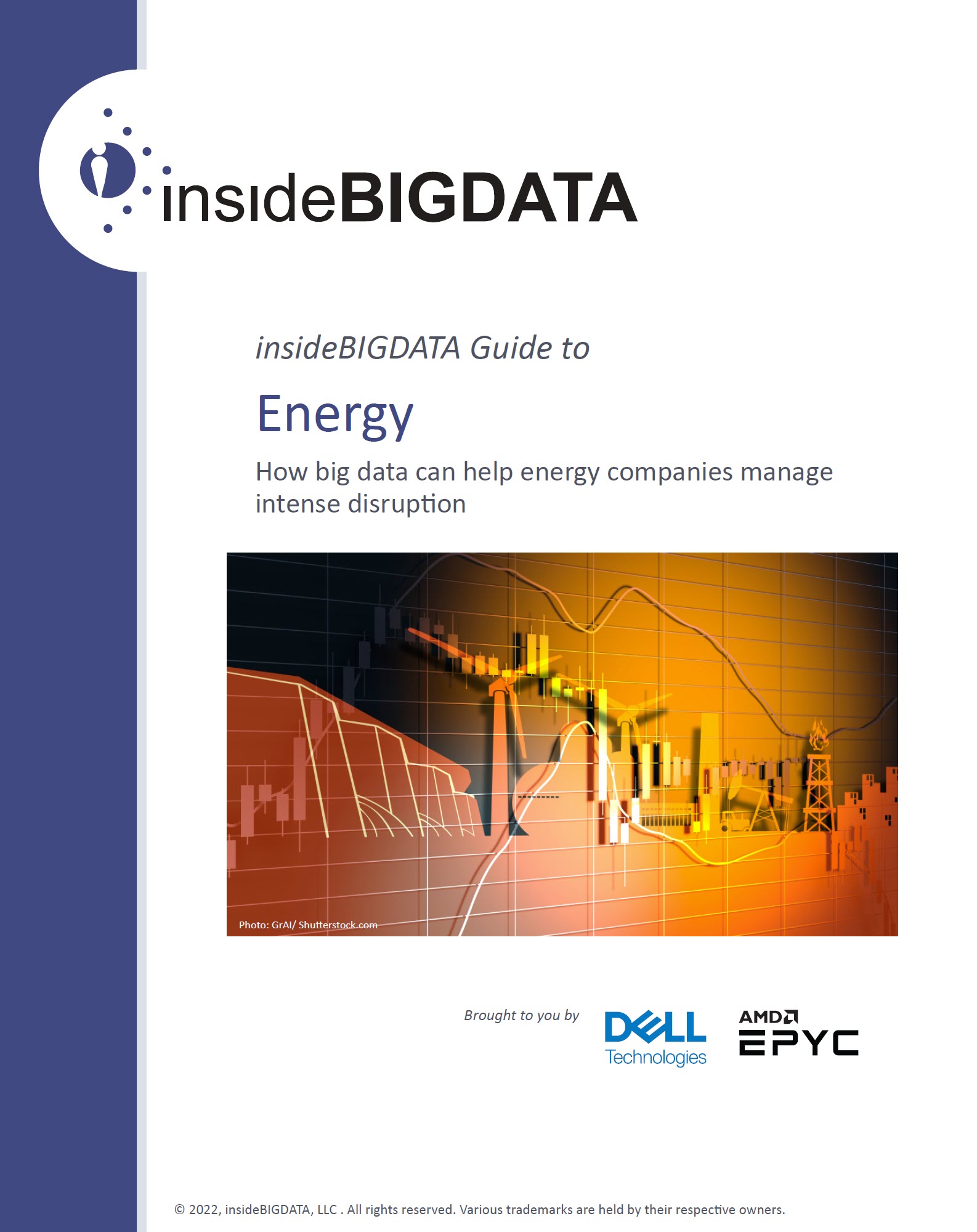Sponsored Post
Introduction
The energy industry has always faced large price swings as a result of changes in the global economy. But today, this entire sector is facing an unprecedented level of disruption. Industry analysts say it is in the throes of a dramatic upheaval that is requiring companies in this industry to reinvent themselves.
For example, Gartner recently warned, “Oil and gas CIOs face a chaotic and confusing business environment that is likely to continue through the next decade.” They added, “The period between 2020 and 2030 will emerge as the ‘decade of deep redesign’ because all oil and gas companies will need to make significant changes in their investments and operations.”
To navigate this period of intense uncertainty, many energy executives are looking to big data analytics to point the way. According to Mordor Intelligence, “The big data analytics market in energy sector is expected to grow at a CAGR of 11.28%, during the forecast period, 2021-2026. Big data analytics play a crucial role in reducing energy consumption and improving energy efficiency in the energy sector.”
This paper, “insideAI News Guide to Energy,” will:
- Take a closer look at some of the biggest disruptors affecting energy companies
- Examine how big data analytics can help these firms reduce risk, drive down costs, and improve efficiency.
Current Energy Industry Disruptors
Part of what is making this period of time so difficult for energy companies is that the disruption is coming from multiple directions at once. Some of the biggest sources of this disruption include the following:
Climate change
Global climate change is affecting energy companies in at least three significant ways.
Weather patterns
First, changes in weather patterns are altering energy demand and hindering the ability of the energy sector to meet that demand. In recent years, extreme weather events and natural disasters have become much more common. The World Meteorological Organization reported, “A disaster related to a weather, climate or water hazard occurred every day on average over the past 50 years—killing 115 people and causing US$ 202 million in losses daily. . . .The number of disasters has increased by a factor of five over the 50-year period, driven by climate change, more extreme weather and improved reporting.”
In the United States, examples of this extreme weather include the California drought and wildfires that made it difficult for grid operators to get power to their customers. And on the opposite end of the spectrum were the 2021 winter storms in Texas that drove demand to unprecedented heights and nearly caused the grid to fail.
Regulation
Second, not only do energy companies need to deal with direct impacts from climate change, they also must comply with increasing regulation as governments attempt to reduce greenhouse gas emissions and mitigate global warming. Agencies around the globe have set ambitious targets that energy companies must meet if they want to stay in business. Recognizing their role in this crisis, many energy companies are challenging themselves to exceed those deadlines.
Alternative energy investment
And that leads to the third big impact of climate change—investment in alternative energy. According to Deloitte, “Renewable energy growth is poised to accelerate in 2022, as concern for climate change and support for environmental, social, and governance (ESG) considerations grow and demand for cleaner energy sources from most market segments accelerates. At the same time, the Biden administration’s vision to fully decarbonize the US economy is helping spur activity in the renewable sector that will likely drive further growth—particularly if proposed legislation is enacted.” Companies are racing to develop solar, wind, hydropower, and other clean energy. While this new development represents a significant opportunity, it also requires energy companies to radically transform themselves.
New technologies
At the same time that energy companies are developing alternative energy to help them respond to climate change, they also face the challenge of integrating other new technologies into their organizations if they want to remain competitive.
Digital transformation has affected every industry, and the energy sector is no exception. Companies of all kinds are looking for ways to do more business online and to become more data driven. Every firm in the energy industry knows that its competitors are using technology to become more efficient and responsive to customers, and they have to do the same if they want to keep up.
In addition, technology trends like the Internet of Things (IoT), smart grids, and smart cities are changing the marketplace. Energy companies have more data at their fingertips than ever before.
As the U.S. Department of Energy noted, the electric industry sector is facing an “explosion” of data coming from a variety of sources. Some examples include:
- Field measurements: smart meters, synchrophasors, smart sensors
- Weather measurements: ground stations, radar, satellite, and specialized systems such as the National Lightning Detection Network
- Asset monitoring: embedded sensors for condition-based monitoring
- Distributed generation data, data about electric vehicle charging, customer-driven data: Internet of Things devices, smart meters, demand response devices
- Other important data sources for outage management: animal migration, vegetation management, fire detection, and water and gas management.
This data explosion provides companies with valuable information that can help them improve their business, but the technologies themselves also drive up demand, requiring firms to invest in new infrastructure to meet this demand.
International conflict
Because the energy market is a global market, what happens in one relatively small country can have a huge impact on worldwide energy prices. Conflicts, like the war in Ukraine, can drive up prices for gasoline, natural gas, and electricity. They can also disrupt the energy supply and transmission.
In addition, energy facilities can themselves become military targets—of both physical attacks and cyberattacks. Responding to these kinds of threats can pose an existential threat to energy companies.
COVID-19
As if all that weren’t enough, energy companies are still dealing with the fallout from the global pandemic. During the COVID-19 crisis, energy companies have experienced the same supply disruptions that companies in other industries faced. Getting the equipment and parts necessary to build and maintain infrastructure has been challenging for many organizations. And as business managers are well aware, the pandemic also led to talent shortages. Many of the jobs in the energy industry are physically challenging—sometimes even hazardous. During the pandemic many workers re-considered their previous career choices and moved on to other organizations, leaving their employers scrambling to keep the lights on—sometimes quite literally.
Competition
The deregulation of the 1980s and 1990s led to a much more competitive marketplace, which continues to be the norm today. Customers have more options, leading to much higher churn as customers seek out the best deal. And the switch toward alternative energy is attracting many startups, which has only increased the level of competition.
Energy companies simply cannot continue doing things the same way they always have if they want to remain competitive.
Cost of exploration
Another ongoing challenge is the increasingly high cost of obtaining gas and oil. The process of oil and gas exploration is not cheap. If a particular well doesn’t pan out, companies face significant losses.
In addition, energy companies have already tapped into most of the natural reserves that are “easy” to extract. While natural resources are still extensive, obtaining them isn’t always cost effective. Companies may have to drill deeper, in less hospitable environments than they have been in before. And in some cases, they have needed to develop new technologies to be able to tap those reserves.
Energy companies need every advantage they can find when the risks are this high and the competition this intense.
Over the next couple of weeks we’ll explore these topics:
- Introduction; Current energy industry disruptors
- 13 ways big data can improve efficiency and drive down costs in the energy industry; Looking ahead
Download the complete insideAI News Guide to Energy technology guide courtesy of Dell Technologies and AMD.





Speak Your Mind